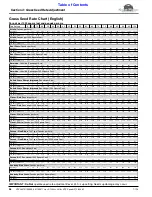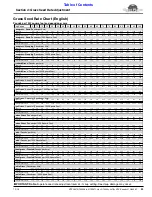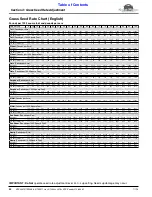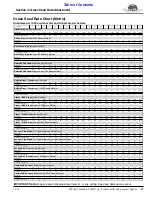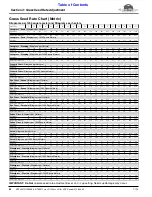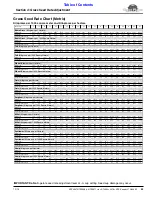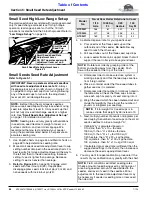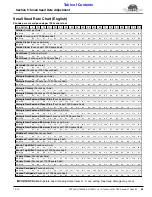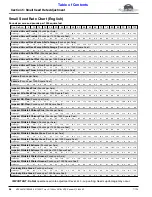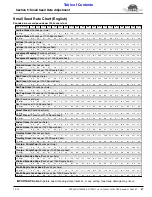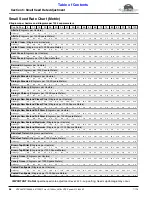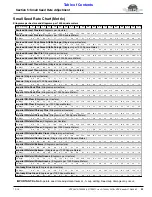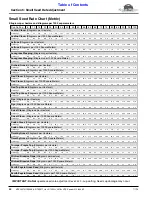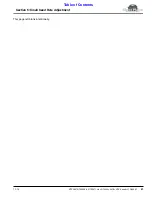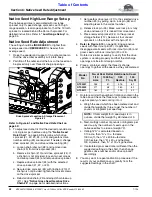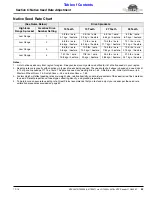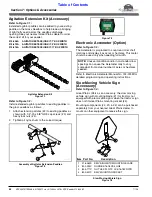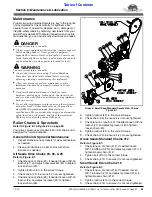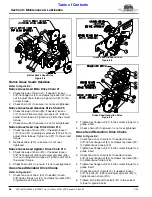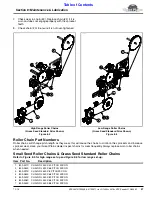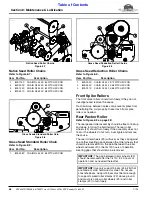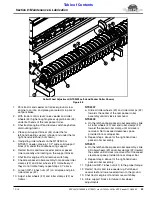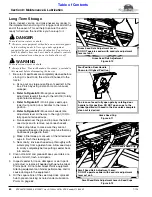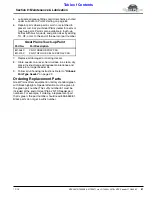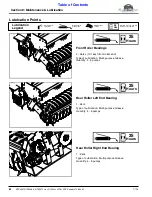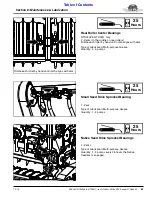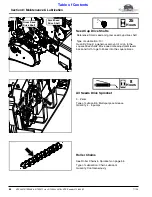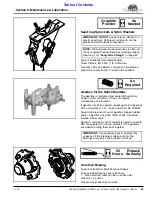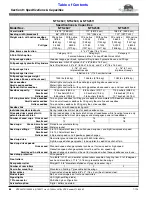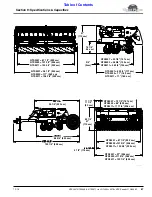
Section 6: Native Seed Rate Adjustment
NTS2507, NTS2509, & NTS2511 s/n+ 2019+ NTS Seeder 313-900M
7/1/19
52
Native Seed High/Low Range Set-up
The native seed drive is associated with low range
sprocket only. If speed change sprocket is set for high
range operation, rearrange sprocket so that the 19 tooth
sprocket is located behind the 35 tooth sprocket. For
detailed instructions, Refer to
Native Seed Rate Adjustment
The setting should be
INCREASED
f or lighter than
average seed and
DECREASED
for heavier than
average seed.
1.
Raise the seeder and support it in a safe manner so
that the drive roller assembly will rotate freely.
2.
Partition off the outer end of the box so that seed can
be placed only over three discharge openings.
Drive Sprocket Location & Storage Placement
Figure 6-1
Refer to Figure 6-1 and Native Seed Rate Chart on
page 53:
3.
To adjust seed rate, first find the desired pounds/acre
or kilograms per hectare using the
on page 53. Determine which drive
sprocket (#1, #2, #3, #4, or #5) and gearbox drive
number setting (#5) are required. If needed, change
drive sprocket (#4) and drive number setting (#5):
a. Loosen chain idler nut (#8) and remove drive
chain (#9) from drive sprocket (#4).
b. Remove linchpin (#10) and drive sprocket (#4). If
a linchpin is not provided, loosen two set screws
on drive sprocket (#4) and remove drive sprocket.
c. Replace drive sprocket (#4) with the selected
drive sprocket (#1, #2, or #3).
d. Secure drive sprocket (#4) with linchpin (#10). If
linchpin is not provided, tighten the two set screws
on the drive sprocket.
e. Reinstall drive chain (#9) and adjust chain take-up
(#11). See
“Native Grass Seed Gearbox Drive
on page 56 for detailed instructions.
39028
f. Set gearbox drive lever (#7) to the selected drive
number (#5) by pulling up on lock pin (#6) and
adjusting lever to the correct number.
g. Release lock pin (#6). Make sure lock pin is fully
down and lever (#7) is locked from movement.
h. Place removed sprocket (#4) on the sprocket
storage holder (#12). Secure all four unused
sprockets on the holder with linchpin (#12).
4.
Refer to
on page 30: Engage native
seeds with lock in/out pin (#2). If applicable,
disengage small seeds with lock in/out pin (#5) and
grass seeds with lock in/out pin (#3 or #4).
5.
Rotate drive roller assembly to verify that the drive
system is working properly and that the discharge
openings are free from foreign matter.
6.
Place a container under the three discharge
openings to gather all the seeds as they are metered.
7.
Rotate rear roller the number of rotations noted in the
table above. Check the three cups to make sure each
cup has plenty of seed coming into it.
a. Weigh the seed which has been metered out and
divide that weight by three to get the number of
pounds or kilograms per seed cup.
b. Next, multiply number of pounds or kilograms per
seed cup by the number of seed cups on the
native seedbox to arrive at weight “A”.
c. If Weight “A” is calculated based on:
1/10 acre, then “A” x 10 = lbs/acre
1000 sq ft, then “A” x 43.56 = lbs/acre
1/20 hectare, then “A” x 20 = kgs/hectare
100 sq meters, then “A” x 100 = kgs/hectare
d. If calculated grass seed rate is different than the
suggested settings in the chart, then change
gearbox drive number and/or drive sprocket
accordingly.
8.
You may want to repeat calibration procedure if the
results of your calibration vary greatly from the
suggested settings in the chart.
Model
No
No. of Rear Roller Rotations to Cover
1/10
Acre
1000 Sq.
Ft.
1/20
Hectare
100
Sq. M
NTS2507
255
57
315
61
NTS2509
211 48
260
52
NTS2511
162 37
200
40
NOTE:
If total weight for 3 seed cups is in
ounces, divide that weight by 48 instead of 3.
Section 6: Native Seed Rate Adjustment

